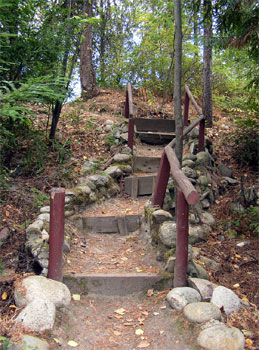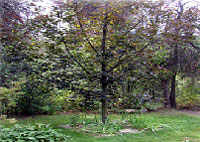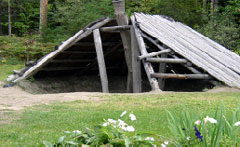Zuckerberg Island Story

Story of Zuckerberg Island
Long ago the Columbia River carved through the Selkirk Mountains forming a major valley. The ice age buried the river and mountain tops with glaciers. As the ice melted into the valley the Columbia River had, at times, many river channels. Zuckerberg Island may have been formed as a lag deposit within this channeling.
The island formation and unveiling after the ice age invited rich and diverse vegetation and wildlife communities. The relatively wet and mild climate supported this rich environment which attracted native inhabitants who prospered by the local bounty. These Indians settled on the island during the winter using their stored food reserves of salmon. Even as explorer David Thompson surveyed this area of the Columbia River in 1811, the Indians were still inhabiting the island during spring fishing and winter camp
The attraction of the island drew Alexander Zuckerberg to establish his special island home. Zuckerberg Island remains not only a place of beuaty, but also a legacy to its historical past. Alexander Feodorovitch Zuckerberg was trained as a civil engineer. He taught mathematics in a Russian high school until 1917, then he immigrated to Canada in 1923 with his second wife, Alicia, and son and daughter, Gilbert and Asta. In 1931 he came to Castlegar at the request of Peter Verigin II to teach the Doukhobor children. Shortly afterwards, he settled on the island and began building the Chapel House. He was a Tolstoyan and his lifestyle reflected his admiration for the great Russian writer, humanitarian, and pacifist. Zuckerberg was as unique as his work and was greatly admired to this day, particularly by the Doukhobors.
Hiroshima Memorial
On August 6, 1985 this garden memorial was placed in remembrance of the 40th anniversary of the atomic bomb drop on Hiroshima, Japan. This Japanese maple tree is the focus of the peace garden.
Kekuli (a small pit house)
This island served as a winter base to a Lakes band of Interior Salishan people from at least 3500 years ago to recent times. Above is a reconstructed version of one of their small pit houses. A single entrance was through the rectangular small hole in the centre of the roof. A pit house was warm in the winter, but in spite of cedar bark lining, it had uncomfortable water seepage from the ground. Remains of pits can be found on the south slope of the island near the Chapel House.
Salmon Fishing River
Salish and Kutenai Indians caught up to 1000 pounds of salmon a day with basket traps which were placed at the base of a river cascade. It is thought that they also constructed a weir, or dike of round stones extending across the river to trap fish. This beach area was used for drying and storing fish reserves. Beginning in 1934 with the Grand Coulee, a series of dams were built on the Columbia River preventing the Pacific salmon migration.
A message to park visitors Help us protect Zuckerberg Island Heritage Park. Please leave it as you have found it so that future visitors may enjoy the park as you have. Ask a park guide for further information about the park or call (250) 365-6440 or Contact Us by email.


